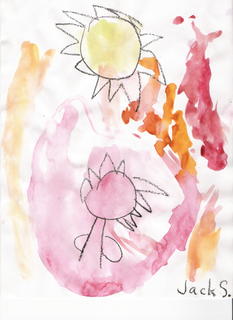
While the J-1 visa is by far the most common visa category for au pairs, other child care workers occasionally come in using other visa categories.
If a nanny would like to come to the US to work with a family coming to the US on a work visa, the nanny may be able to work on a B-1 visa. Under Section 41.31 of the Foreign Affairs manual, personal or domestic servants who accompany or follow to join employers entering the US in B, E, F, H, I, J, L or M nonimmigrants may enter the US if
1. The employee has a residence abroad which he or she has no intention of abandoning (notwithstanding the fact that the employer may be in a non immigrant status which does not require such a showing);
2. The employee can demonstrate at least one year’s experience as a personal or domestic servant, and
3. The employee has been employed abroad by the employer as a personal or domestic servant, for at least one year prior to the date of the employer’s admission to the United States; or
4. If the employee-employer relationship existed immediately prior to the time of visa application, the employer can demonstrate that he or she has regularly employed (either year-round or seasonally) personal or domestic servants over a period of several years preceding the domestic servant’s visa application for a nonimmigrant B-1 visa.
5. The employer and the employee have signed an employment contract which contains statements that the employer guarantees the employee the minimum or prevailing wages, whichever is greater, and free room and board and will be the only provider of employment to the servant41.31 N6.3-4 Servants of Lawful Permanent Residents (LPRs).
When can an H-2B visa be used and what are the rules associated with this type of visas for au pairs?
H-2B visas are sometimes used by child monitors. H-2B nonimmigrant work visa provides a method for US employers and agents to obtain the services of foreign nationals to fill temporary needs for additional workers. The annual cap on this type of visa is 66,000. Until recently, the limits and requirements of the category caused usage of the visa to be marginal. For example, in 1995, only 2,398 H-2B visas were issued. However, the visa has become very popular in recent years, particularly in the hospitality industry. The limit was reached early in fiscal year 2005, though recent legislative changes should make more H-2Bs available
H-2B visas require employers to go through a process of advertising for a position to show no Americans are available to fill the position and are immediately available.The length of the stay on an H-2B visa is limited by the duration of the employer’s temporary need for additional workers. The maximum authorized period of stay is one year, and the visa may be extended for a total of three years. However, extension applications are closely scrutinized.
Either skilled or unskilled workers may be employed on an H-2B visa. Several unpublished decisions provide what little guidance is available on this subject. What does seem to be key is proving the need for the worker is temporary. If an employer does not explain why the need for the child monitor will end or hinting that the position is permanent will hurt the petition. An employer, for example, might want to specify that the need for the child monitor will end when a child registers in school.

No comments:
Post a Comment